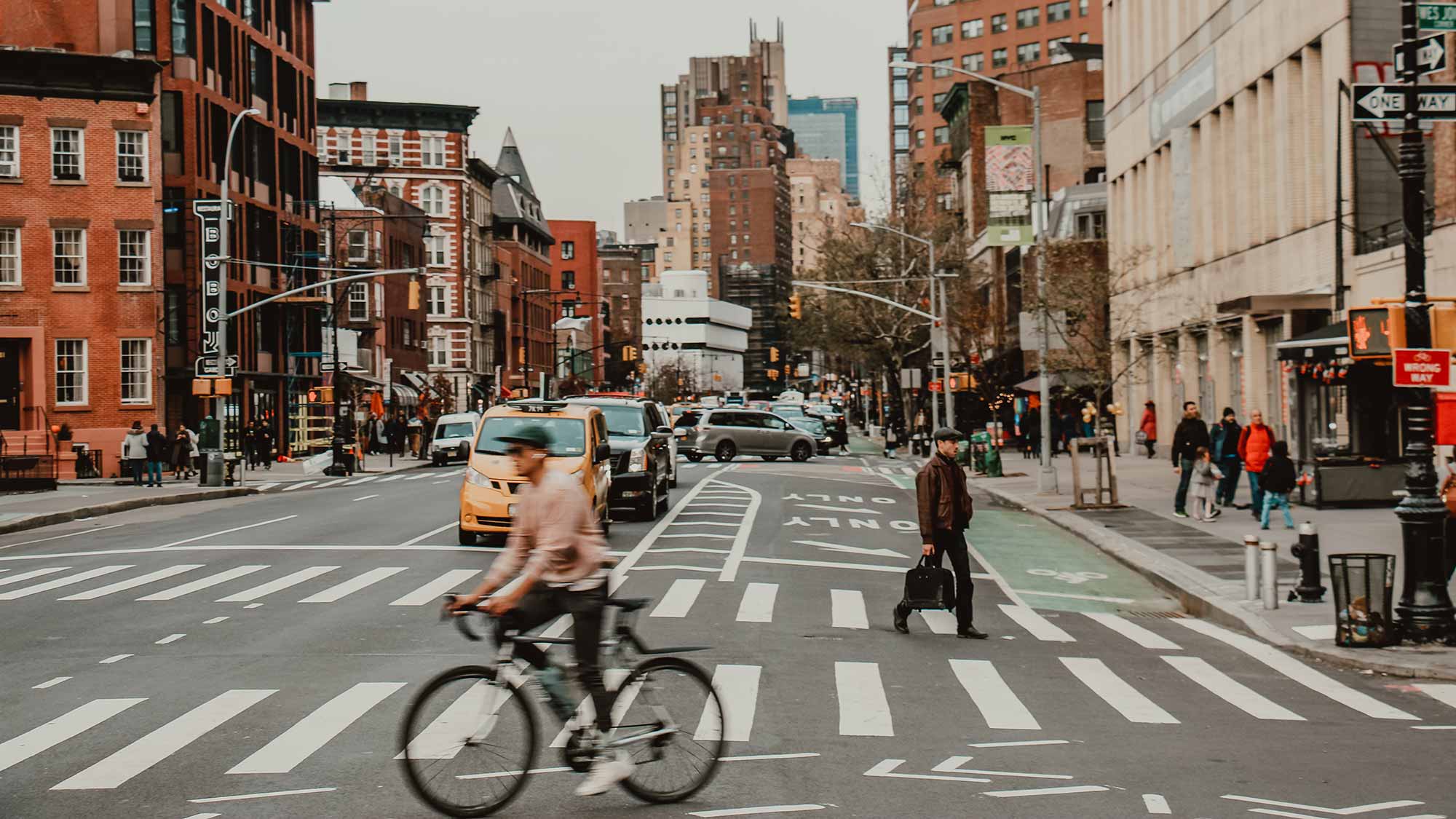This year’s lockdown experiences have challenged many assumptions about city lives. Now, as vaccines become a reality, we have an opportunity to build a new vision of the urban future, learning from this global-yet-local experience.
For the majority who live in towns and cities, our lives have been transformed as we are being urged to:
-
Work from home, as much as possible, using online and digital tools
-
Rediscover our local town centre by bike or on foot
-
Reduce international travel
-
Refocus on local supply chains and promote national production
-
Retain local jobs for local people
Yet, almost without exception, all of these trends were in train before the health emergency. The response to the virus has merely magnified and accelerated them. Despite the initial fear that the pandemic meant that urbanisation would come to a halt, I believe cities are about to adapt and in beneficial ways.
Beyond localism: four new trends
Encouraged by their citizens, growing cities are increasingly claiming tax raising powers, taking control of transport, housing, utilities and even healthcare in some cases. It is cities, more than national governments, that have led effective policies of change. Whether it’s implementing road pricing schemes, decarbonising energy and heat networks, banning diesel or encouraging a shift to cycling, city leadership demonstrably works.
The current pandemic has merely compounded these trends, engendering great pride and belonging to cities dealing with strife. I suspect ultimately, it is city leaders more than national governments that will be the ones to persuade their people back to work post-lockdown.
Thanks to digital technology and increasingly capable networking, most developed world cities have already seen the potential of the knowledge-based economy as a creator of new jobs and rapid builder of wealth. For new entrants, these new activities are less historically dependant, meaning location or lack of size will be no barrier to the possibilities of growth of hi-tech clean manufacturing, digital and data driven services, university, research and science based urban development.
Good ‘place making’ will remain critical to attracting this talent to a city. Our centres need to work even harder post-lockdown to persuade people to leave their homes and head back to the office. New district, town or city-wide relationships could emerge where business works together with the public sector to create an ‘inside-out’ reimagining of our buildings and streets, opening office and retail frontages to spill out onto enlivened public realm, pedestrian only zones and calm ecological corridors.
The digital, responsive city
Technology’s influence is already clear. In this digital era, city governments are already using data to better understand and target those in need, and there is great potential to adopt even more responsive data-driven policies. With vastly greater insights into both their populations and their behaviour, new methods of financing infrastructure, public services and affordable housing become possible with ‘live’ pricing of property values, road use and electronic transactions and the undergrounding and ‘live’ management of goods and services to reduce congestion.
The rise of 2nd tier cities
Technology offers the potential for smaller cities to develop new economic engines of their own, through specialist activities such as remote production, digital modelling, data-analytics, design, prototyping and product refinement. Often less physically congested, more affordable to live and work in, these second tier cities should prove as attractive to talent as some of the larger ‘magnet cities’ are today. Regional networks of second tier cities are already evident in Northern Europe and are now emerging strongly in China.
New suburban centres
Personally, I think the CBD has a strong future, but localism is clearly growing. During lockdowns my fellow Londoners have rediscovered the value and character of the city’s village-based nature, an embrace and support of local neighbourhoods that we’ve seen in many other cities worldwide.
The advent of digital transactions, increased home working and electric bikes and scooters coupled with local electric delivery networks could drive a gradual shift back to this kind of multi-centre model. There’s an opportunity for greater low-cost connectivity within and between decentralised urban centres as places of work, leisure, accommodation, collaboration and trade.
What’s more, with technology facilitating more adaptable buildings and spaces, a historic suburban centre can adopt many of the functions of a CBD without the need for expensive redevelopment or new infrastructure. This trend is being accelerated in the east more than the west. It is best encapsulated by the design of China’s newest City Xion’an – with its plan for multiple centres, layered underground transport networks, with people friendly streets and public realm, conveniently served by electric (and soon autonomous) vehicles.
A sustainable future starts in the city
After the pandemic the other main trend on the horizon is obviously climate change, the push for net zero and the need for sustainable development in all decision making. Cities will be a central context for this development. Sustainable development principles are now established into banking and investment regulation. Digital communications infrastructure, retrofitting buildings, clean energy transformation and sustainable transport are all immediately investable and excellent generators of employment. This combination of net zero ambition and the need for greater social value and jobs will be a winning combination for stimulus the world over and cities will lead the way.
Far from leading to an abandonment of city life, this year has provided many new ideas about how to shape its future for the better.
 ;
;



